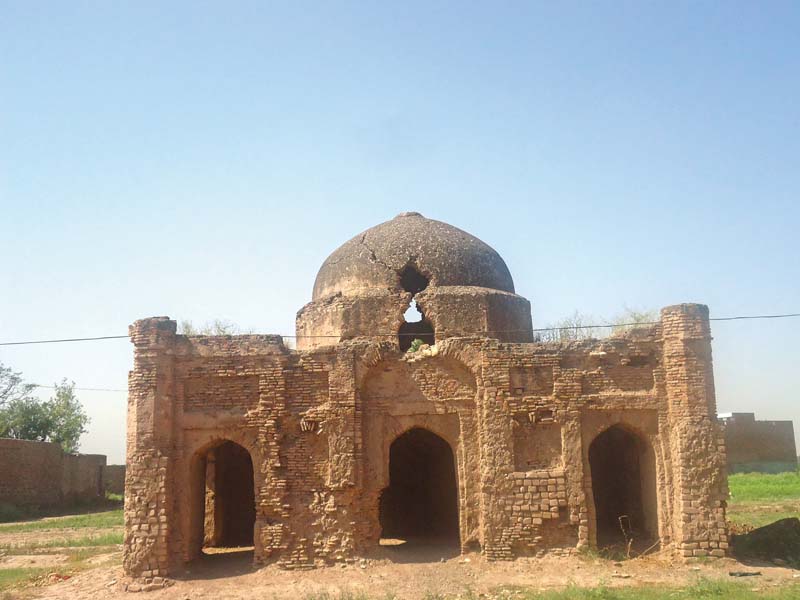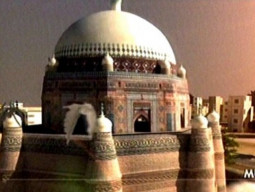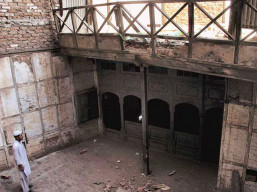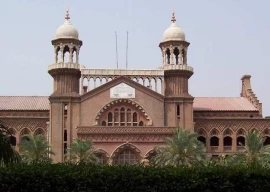
PESHAWAR:
A small mosque from the Mughal era in Choha Gujar village near Chamkani is dying a slow death because no efforts have been made for its restoration or conservation.
The structure locally known as Baoli was once nestled in agricultural fields and orchards. Today it is bound by houses. The area surrounding the monument shrinks each year, and the mosque is now facing threats of seizure by locals.

“Although it is currently in bad shape and needs repair, the mosque is a masterpiece of architecture,” wrote the late Muhammad Nawaz Khan in his book Peshawar. “It is likely that the mosque was built by Sher Shah Suri because its design resembles other mosques made by him.” Other historians believe it was built a century later.
Falling to pieces
The mosque is 12 feet in height, 15 feet in length and 30 feet wide. The central dome is significantly cracked with some bits broken but still sits on the main structure. The smaller domes on each side have vanished over time. The small minarets which a few years ago could be seen atop four corners of the building have now disappeared.
The main hall can be entered from the front as well as the sides of the mosque as no doors remain.
Arches divide the main hall into three bays, with several distinct features giving it a Mughal appearance. The structure has been constructed with Waziri bricks and limestone. Now, most of the walls have been covered with mud by locals to provide support to
the structure.
A sanctuary of old
An open ground occupies the front of the building, which locals believe held water wells at one point in time.
In a bygone era, travellers might have stopped at Baoli to pray and relax. A sanctuary in the middle of an arduous journey. Historians believe Baoli was built during the 17th century, during the reign of Emperor Jehangir, for travellers making the journey from Central Asia and Afghanistan to other parts of the Subcontinent.

The officials at the Directorate of Archaeology & Museums claim a complete list of all historical sites in the city has been drawn up. Although some structures are still under the control of Auqaf and city governments, Baoli was not claimed by any of the authorities. “There was another such building in the Mian Umer Baba Graveyard which was surrounded by houses and now has disappeared,” said Irfan Khan, who lives near the structure. “The fate of this mosque is very similar as there is no support from any of the authorities to protect the building.” He said locals have tried to protect it by layering mud onto the bricks to stop erosion and prevent the walls from crumbling down. However, all these efforts are fruitless as it is out of their ability or expertise to preserve historical buildings.
Published in The Express Tribune, October 10th, 2015.






































COMMENTS (11)
Comments are moderated and generally will be posted if they are on-topic and not abusive.
For more information, please see our Comments FAQ